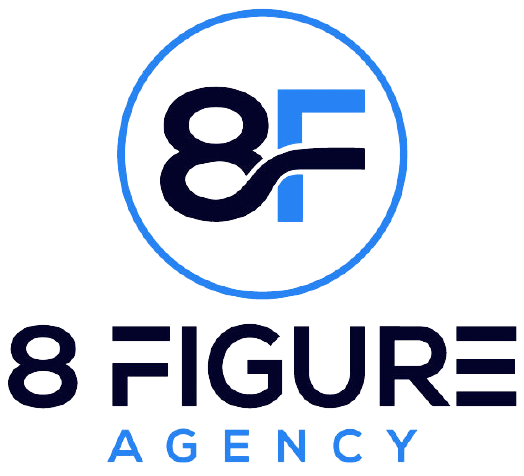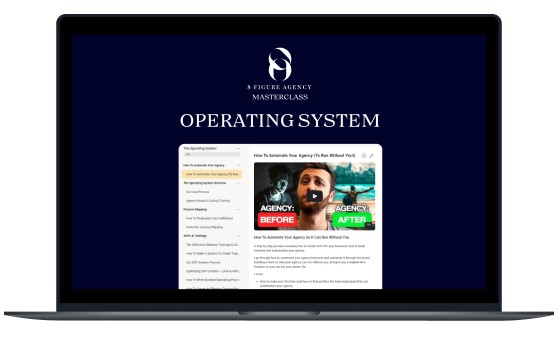
Pricing strategies in marketing directly affect a marketing agency’s bottom line and maximize profits. An effective pricing strategy ensures that the agencies charge fair and competitive prices for their services and maximize profits.
A well-crafted competition-based pricing strategy positions the agency’s services at a compelling level, aligning with the perceived value to outperform competitors.
By analyzing and adapting to the target market, understanding clients’ willingness to pay, and aligning a value-based pricing strategy with their needs, marketing agencies can attract new clients and retain existing ones.
Setting Your Agency’s Financial Goals
Setting financial goals for your marketing agency is crucial for measuring performance, driving growth, and ensuring long-term sustainability.
Determining Profitability Goals
Start by understanding your agency’s fixed and variable costs including all expenses relevant to your operations. Assess your historical financial data to determine the average profit margins your agency has achieved. Researching industry benchmarks to gain insights into typical profit margins for marketing agencies of similar size and scope can serve as a reference point for setting your goals.
Setting Revenue Targets
Evaluate your agency’s current revenue, analyze its sources, and identify both areas of strength as well as improvement. With this analysis determine a realistic rate of growth based on your agency’s capabilities.
How much can you expand?
What does your client retention look like?
Do you need to make adjustments to your pricing strategy structure?
Once you’re able to answer these questions develop a targeted marketing pricing strategy to generate the leads you want making sure that your sales and marketing efforts align and can be accomplished in a pre-determined timeframe. Breaking down the targets into milestones makes it easier to track progress and make adjustments as needed.
Understanding Your Target Market
Understanding your target market is essential for marketing agencies to effectively tailor their services, messaging, and strategies.
Identifying Your Ideal Clients
- Define your niche (Niche Down to Scale Up). Focus on niches where you can deliver the most value and differentiate yourself from competitors.
- Create detailed buyer personas that represent your ideal clients.
- Analyze your existing clients to identify patterns and commonalities.
Analyzing Their Needs and Preferences
Conducting thorough market research will assist you in gaining insight into your target market. Utilize information-collection methods to identify and analyze market gaps, pain points, preferences, behaviors, and emerging needs.
Researching Your Competitors’ Pricing Strategies
Remember that pricing strategies are multifaceted and should align with your agency’s overall goals, target market, and what value-based pricing requires.
Stay ahead of the market competition by first identifying who they are and collecting pricing technique information from various sources. Direct competitors offer similar services to yours, while indirect competitors may target the same audience with different solutions.
Evaluating Pricing Models
- Examine the pricing strategy models employed by your competitors. (retainer-based, project-based, hourly rates,performance-based).
- Determine if your competitors offer different pricing tiers or packages that cater to what varying clients are willing to pay.
- Identify the circumstances under which they apply discounts and promotions and the impact on their pricing strategy and profitability.
- Look into the contract terms your competitors offer (duration, cancellation policies, additional fees or charges) then take note of their client retention strategies.
Analyzing the Strengths and Weaknesses of Competitors’ Pricing Strategies
Determine your competitors’ perceived value and gauge their consumer demand, satisfaction, and retention.
You should pay keen attention to any unique selling propositions or advantages your competitors have based on their pricing strategies and assess if they are effectively covering costs, achieving desired profit margins, and sustaining profitability in the long term. Follow up by assessing the flexibility your competitors exhibit in adjusting their pricing technique to market conditions or client demands.
Identifying Your Unique Selling Proposition (USP)
Identifying your Unique Selling Proposition requires a deep understanding of your agency’s strengths, weaknesses, and the needs of your target market. By highlighting your unique value proposition, you can differentiate your agency, attract the right clients, and position yourself as a trusted and valuable partner in meeting their consumer demand.
Defining Your Agency’s Strengths and Weaknesses
To define your agency’s strengths and weaknesses you should conduct an honest assessment. Identify the areas where you excel while seeking feedback from your current and past clients to understand what potential customers would value most about your agency.
Analyze your competitors’ strengths and weaknesses to understand how your agency compares and determine how you can differentiate yourself and leverage your strengths.
Highlighting Your Agency’s Unique Value Proposition
You can achieve this by crafting a clear, compelling, and consistent messaging strategy that communicates your unique value proposition. Tailor your marketing efforts to showcase your USP and emphasize the benefits that are most relevant and appealing to your target market.
Work those Testimonials! Illustrate how your agency has delivered exceptional results for clients and the impact your services had on their businesses. Use these achievements to establish your agency as a thought leader in your industry by sharing insights, expertise, and unique perspectives.
Choosing a Pricing Model

It’s important to note that agencies can take common pricing strategies and also combine or customize pricing strategy models based on the specific needs of each client or project. Additionally, ongoing monitoring, evaluation, and adjustment of pricing strategy models are essential to ensure profitability, client satisfaction, and market competitiveness. Consider factors such as project complexity, client preferences, industry standards, and the agency’s unique value proposition when testing pricing strategy examples.
Hourly Rate Pricing
Hourly rate pricing involves charging clients based on the number of hours worked by your agency or individual team members. This or bundle pricing is commonly used when project scopes or timelines are uncertain, or when clients require flexibility.
Hourly rates provide a transparent breakdown of costs, making it easier for clients to understand and budget, however, clients may find it challenging to predict the total project cost accurately, leading to uncertainty and potential budget concerns.
Hourly rate pricing can inadvertently shift the focus to the amount of time spent on tasks rather than the value delivered to the client.
Fixed Pricing
Fixed pricing involves setting a predetermined price for a specific product or service, or project, regardless of the time or effort required. This is suitable when project scopes are well-defined, and the agency has a good understanding of the project sustainability.
Because the amounts are predetermined clients know the exact cost-plus pricing upfront, which helps them plan and budget effectively, however, if the agency underestimates the cost-plus pricing effort or encounters unforeseen challenges, the fixed price may not cover the actual costs, impacting profitability.
Fixed pricing may not accommodate changes in project requirements, potentially leading to additional negotiation or extra charges.
Value-Based Pricing
Value-based pricing focuses on the perceived value and benefits delivered to the client rather than the agency’s costs or time spent. This works best when the agency can demonstrate the unique value, or return on investment (ROI) their services can generate for clients.
Since Value-based pricing allows agencies to capture a fair market share of the value they create for clients, it may be higher than the costs incurred. On the flip side, however, determining the value of intangible outcomes can be subjective and may require a deep understanding of the client’s business and industry.
Educating clients about the value and ROI they can expect from the agency’s services may require clear and persuasive communication.
Determining Your Agency’s Pricing Structure
When determining your agency’s pricing structure, you must strike a balance between covering the production cost, providing value to clients, and remaining competitive in the market. Regularly review and adjust your pricing structure based on client feedback, market trends, competitor comparisons, and changes in your agency’s capabilities and offerings
Developing Pricing Tiers
Consider offering different pricing tiers or packages to cater to clients with varying needs and budgets. Create tiers based on the scope of services, level of support, deliverables, or access to additional features. Using descriptive names for your pricing tiers helps clients understand the distinctions between tiers and choose the one that best meets their needs.
Implementing Retainer-Based Pricing
Charging clients a fixed recurring fee for ongoing services over a specific period, typically monthly provides a steady and predictable income stream, making it easier to plan and manage agency resources. Clients on retainer are more likely to be committed and engaged, fostering long-term relationships which help agencies allocate resources effectively, as they can plan staff availability and workload based on agreed-upon retainer hours or deliverables. This provides a foundation for strategic partnerships.
However for this to work you need to clearly define the scope of services and deliverables covered under the retainer and establish clear contract terms while continually demonstrating the value and outcomes your agency delivers to justify the retainer fee and maintain client satisfaction.
Creating Packages and Bundles
Creative packages and bundled services allow marketing agencies to provide comprehensive solutions that meet clients’ needs while maximizing the perceived value they receive, increasing client satisfaction, improving profitability, and differentiating themselves in the market.
Designing Packages That Meet Clients’ Needs
- Do the client research on your target market
- Develop packages that align with common requests or address specific pain points your clients face.
- Create packages with distinct tiers to cater to clients with varying budgets and requirements.
- Communicate and emphasize the value and benefits of each package to potential clients.
Offering Bundled Services for Greater Value
- Identify synergistic services and combine them.
- Offer discounted pricing for bundled services compared to purchasing each service individually.
- Provide flexibility for clients to customize their bundles based on their specific needs.
- Include additional benefits or exclusive features in bundled packages to incentivize clients.
- Use bundled packages as an opportunity to upsell or cross-sell additional services or upgrades.
Communicating Your Pricing Strategy to Clients
Communicating your pricing strategy effectively to clients fosters trust-building manages expectations, and demonstrates the value of your services.
Transparent Pricing and Communication
- Clearly outline your pricing structure and make the breakdown into specific components or services transparent and accessible.
- Provide detailed proposals that clearly outline the scope of services, deliverables, and associated production cost-plus pricing.
- Foster a culture of open communication with clients. Encourage questions, compare prices, and provide prompt, honest answers about your pricing structure and any related policies or terms.
Communicating the Value of Your Pricing
Clearly articulate the value your agency provides and how it aligns with the client’s goals and objectives. Share case studies and testimonials that demonstrate the impact of your services on past clients.
Highlight tangible results and emphasize how your pricing structure is tailored to meet the unique needs of each client, taking care to favorably compare your premium pricing strategy to industry averages or competitors’ rates.
Handling Price Objections
The first step is always to listen attentively to clients’ objections or concerns. Understanding their perspective and identifying their concerns will allow you to effectively reiterate the value and benefits clients will receive from your services.
Consider offering customized solutions that address their budget constraints while still providing value while still demonstrating how your premium prices are justified by the long-term benefits they will gain.
Testing and Adjusting Your Pricing Strategy
It’s important to note that the best pricing strategy adjustments should be made thoughtfully and with a focus on maintaining profitability while delivering value to clients. Regularly review and refine your pricing strategy based on testing results, client feedback, market conditions, and the overall objectives of your agency. By continuously testing and adjusting your pricing strategy, you can optimize your approach and ensure it aligns with both your business goals and the expectations of your clients.
Conducting A/B Testing
A/B testing involves creating two or more pricing strategies and testing them simultaneously with different client segments or markets. This allows you to utilize a control group to measure the variations and successfully compare the performance and the responses of target customers to different pricing strategies.
You should aim to establish key performance indicators (KPIs) to measure the success of each dynamic pricing strategy variation and evaluate the data collected to determine the impact of competitive pricing strategies on the identified metrics. Identify patterns, and trends, to attract customers as well as to inform your pricing strategy adjustments.
Gathering Feedback From Clients
- Conduct surveys or interviews with clients to gather specific feedback on your pricing strategy.
- Request testimonials or reviews from clients regarding their experience with your pricing.
- Monitor client retention rates and identify any patterns related to a competitive pricing strategy while gauging satisfaction and loyalty.
Making Adjustments Based on Data
- Regularly review and analyze pricing strategies, identifying any trends or patterns that indicate the need for adjustments.
- Assess the premium pricing strategy for maximizing the revenue of your target market by experimenting with different price points and analyzing the corresponding demand or conversion rates.
- Be open to making iterative adjustments to your pricing strategy based on data-driven insights.
- Continuously monitor market trends and leverage your premium pricing strategy while staying competitive.
Maintaining Your Agency’s Profitability

Maintaining profitability requires a proactive and strategic approach to financial management. Regularly monitor financial performance, identify cost-saving measures, and periodically evaluate and adjust pricing strategies.
Monitoring Revenue and Expenses
Use accounting software or tools to keep track of and analyze key performance indicators (KPIs) such as revenue growth, profit margins, and client acquisition cost-plus pricing. Prepare and review profit and loss statements to gain a comprehensive understanding of your agency’s financial health as well as identify areas of high costs or low profitability that require attention.
Implementing Cost-Cutting Measures
Regularly review all expenses and look for cost-saving opportunities. Practice negotiating with vendors and suppliers to secure favorable pricing, discounts, or better terms. Identify operational inefficiencies and streamline processes by automating repetitive tasks to eliminate wasteful practices and reduce expenses.
Raising Prices Over Time
You should continuously monitor the market to gauge penetration pricing, industry benchmarks, and the perceived value of your services. Assess if your services consistently generate significant results and provide a competitive edge and decide if the response to market demand is to eventually raise prices over time rather than implementing significant price hikes all at once. Incremental increases allow clients to adjust gradually and minimize the risk of client attrition.
It is important to communicate the price adjustments and emphasize the value clients receive from your services.
Hiring a Pricing Strategist or Consultant
When selecting a premium pricing consultant, conduct thorough research, interview multiple candidates, and assess their qualifications, experience, and compatibility with your agency. Contact us today, and see if we can provide valuable insights and guidance to optimize your premium pricing strategy, enhance profitability, and drive sustainable growth for your marketing agency.
Benefits of Hiring a Pricing Expert
Specialized Knowledge and Expertise
Pricing experts possess deep knowledge and expertise in penetration pricing strategies, market dynamics, and industry best practices. They can offer insights and guidance based on their experience working with various businesses and industries.
Objective Perspective
Premium Pricing Experts provide an objective viewpoint to evaluate your current penetration pricing strategy. They can identify areas for improvement, uncover blind spots, and challenge existing assumptions to optimize your pricing model.
Market and Competitive Analysis
Marketing Pricing experts conduct thorough market and competitive analyses to understand pricing trends, benchmark against competitors, and identify opportunities for differentiation. They can help you position your agency effectively in the market.
Strategy Development
A pricing strategist can assist in developing a comprehensive pricing strategy tailored to your agency’s goals, target market, and competitive landscape. They can help define dynamic pricing, models, pricing structures, and value-based pricing tiers that maximize profitability and value.
Pricing Implementation and Execution
Pricing consultants can provide guidance and support in implementing pricing strategies effectively. They can help you define pricing processes, establish pricing guidelines, and develop pricing tools or software to streamline your operations.
Choosing the Right Pricing Consultant
- Relevant Experience: Look for a pricing consultant who has experience working with marketing agencies or similar service-based businesses. They should have a track record of delivering successful pricing strategies and measurable results.
- Industry Knowledge: Consider a consultant who has expertise in your specific industry or target market. They should understand the competitive market, challenges, and common pricing strategies relevant to your agency’s niche.
- Proven Track Record: Request case studies or client references to assess the consultant’s past performance and success in dynamic pricing strategy development and implementation. Look for evidence of tangible outcomes, such as revenue growth or improved profitability.
- Collaborative Approach: Seek a consultant who values collaboration, and partnership and is willing to work closely with your agency’s team to develop a customized marketing strategy.
- Communication Skills: They should be able to clearly explain complex pricing strategy concepts, engage stakeholders, and present recommendations concisely and understandably.
- Transparent Pricing and ROI: Discuss premium pricing strategies and the expected return on investment (ROI) upfront. Ensure that the consultant’s pricing strategy aligns with your agency’s budget and the value they are expected to deliver.
- Cultural Fit: Consider the compatibility of the pricing strategy consultant with your agency’s culture, values, and working style. A good fit ensures smoother collaboration and a better understanding of your agency’s unique needs.
Final Thoughts
It is important to constantly evaluate and adjust your pricing strategies to stay competitive and responsive to market dynamics. Regularly monitoring your pricing performance, analyzing customer feedback, and keeping an eye on industry trends will help you identify opportunities for refinement and optimization. Additionally, leveraging data-driven insights and market research can provide valuable guidance in determining the optimal pricing structure for your products or services.
At 8 Figure Agency, we specialize in helping businesses master pricing strategies for profitable growth. Our team of experts has a wealth of experience and knowledge in pricing optimization, and we are dedicated to supporting your business in achieving its goals. Contact us today to learn more about how we can assist you in implementing effective pricing strategies that will drive profitable growth for your business.
Frequently Asked Questions
Q: How do I determine the right pricing strategy for my marketing agency?
A: Consider factors such as your agency’s costs, value proposition, target market, market demand, competitive landscape penetration pricing strategy, and client expectations. Test different pricing models, gather feedback, and analyze data to refine your pricing strategy over time.
Q: Should I focus on cost-based or value-based pricing?
A: While a cost-based pricing strategy considers your agency’s expenses, a value-based pricing strategy focuses on the perceived value and benefits your services offer to clients and their willingness to pay. It’s generally recommended to incorporate elements of both approaches into your pricing strategy to ensure profitability and competitive pricing.
Q: How can I communicate the value of my pricing to clients?
A: Clearly articulate the outcomes, benefits, and ROI that clients can expect from your services. Use case studies, testimonials, and personalized communication to demonstrate the value your agency brings and how your pricing method aligns with their goals and willingness to pay.
Q: When should I consider adjusting my pricing strategy?
A: Regularly review your pricing strategy and consider adjustments when market conditions change, the client needs to evolve, or markup pricing. Monitor key metrics, gather feedback, and analyze the performance of your pricing strategy to identify areas for improvement.
Q: How can I handle price objections from clients?
A: Address price strategy objections by emphasizing the value your agency provides, demonstrating the ROI, and offering customization options. Listen to client concerns, provide clear explanations, and be open to negotiating your pricing method when presented with competitive pricing.
While this is no cakewalk, experts are always an accessible resource to streamline the process on your behalf. A well-crafted pricing strategy is any agency’s superpower as long as it is adapted and applied accordingly.





